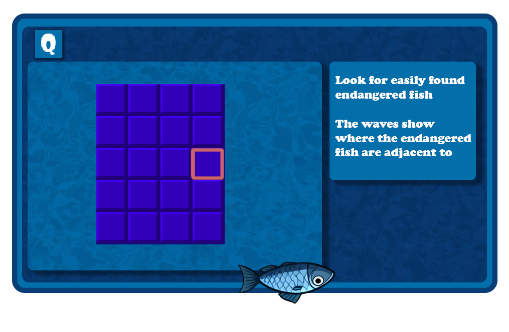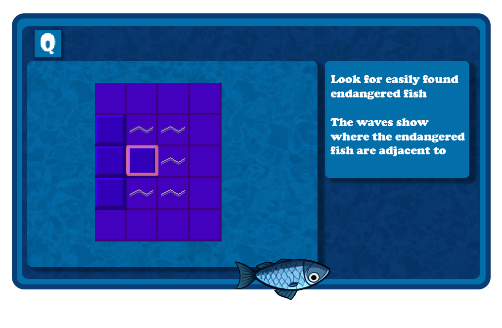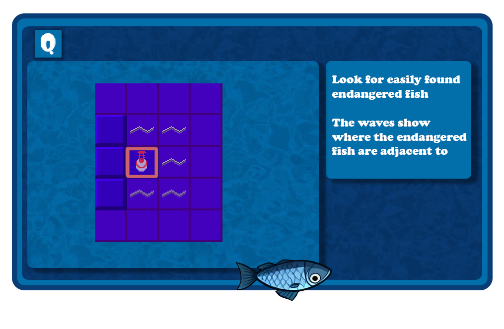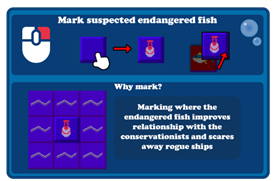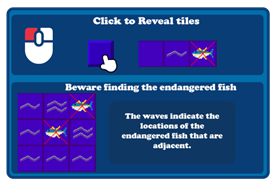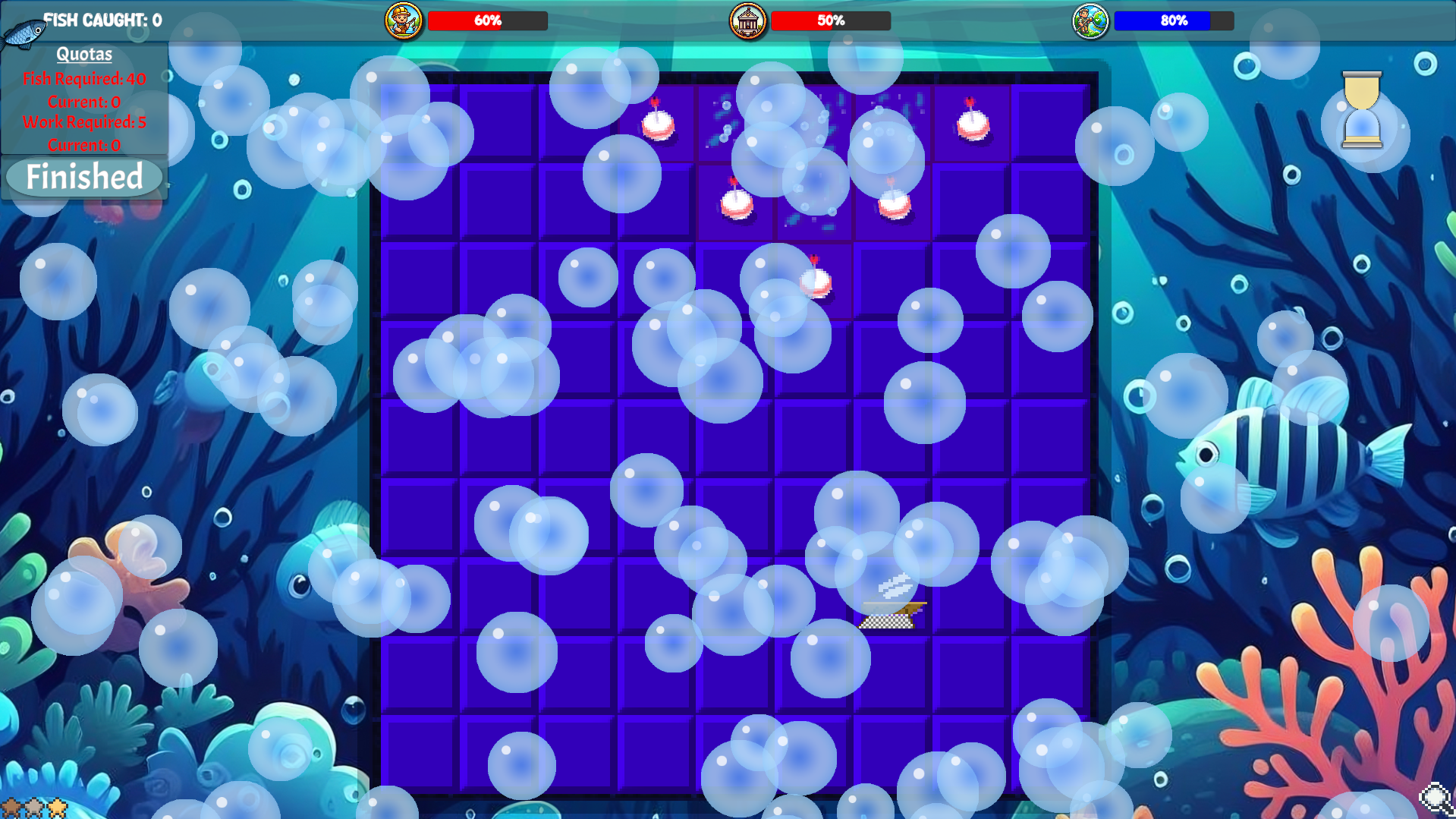
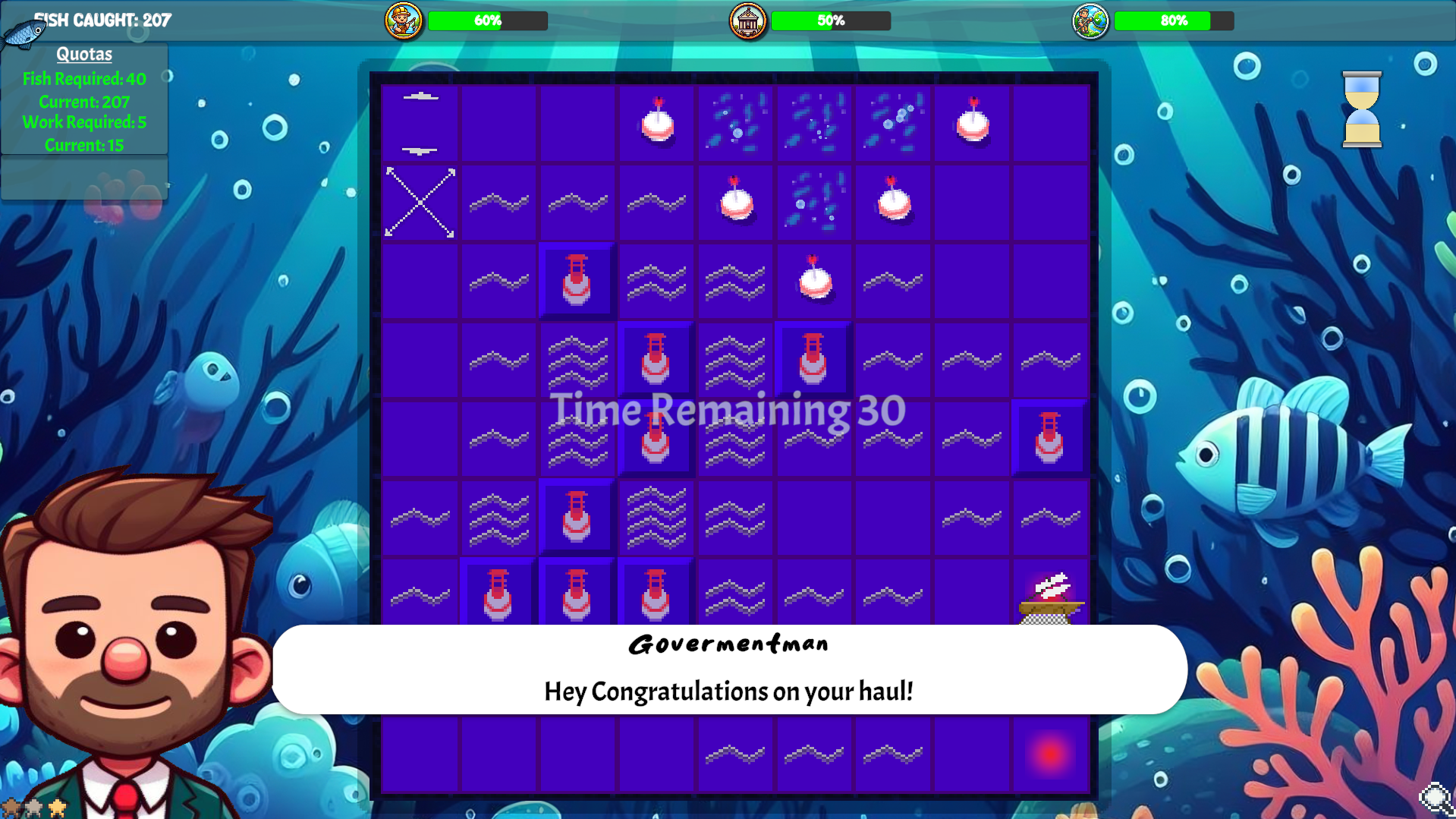
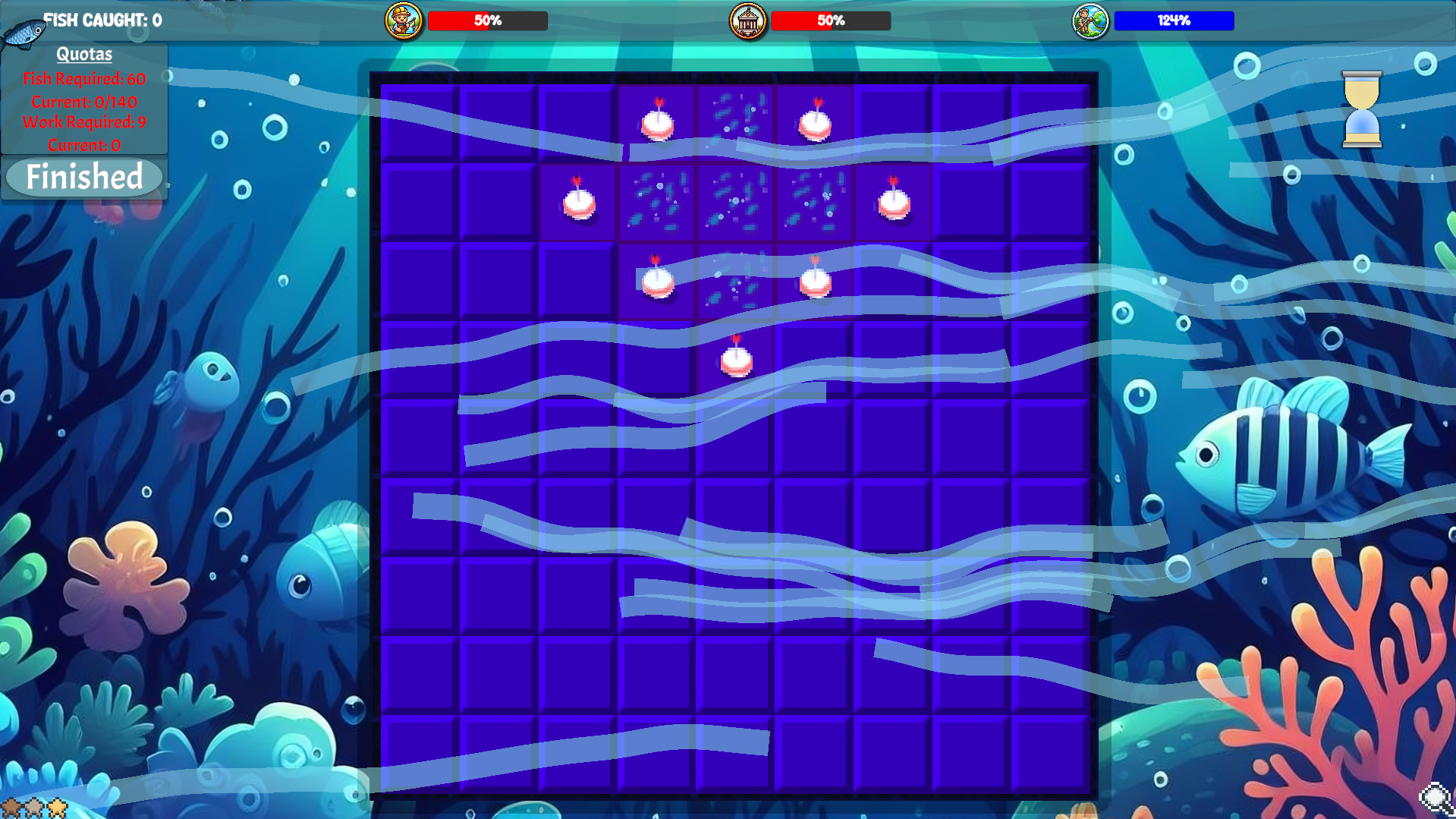
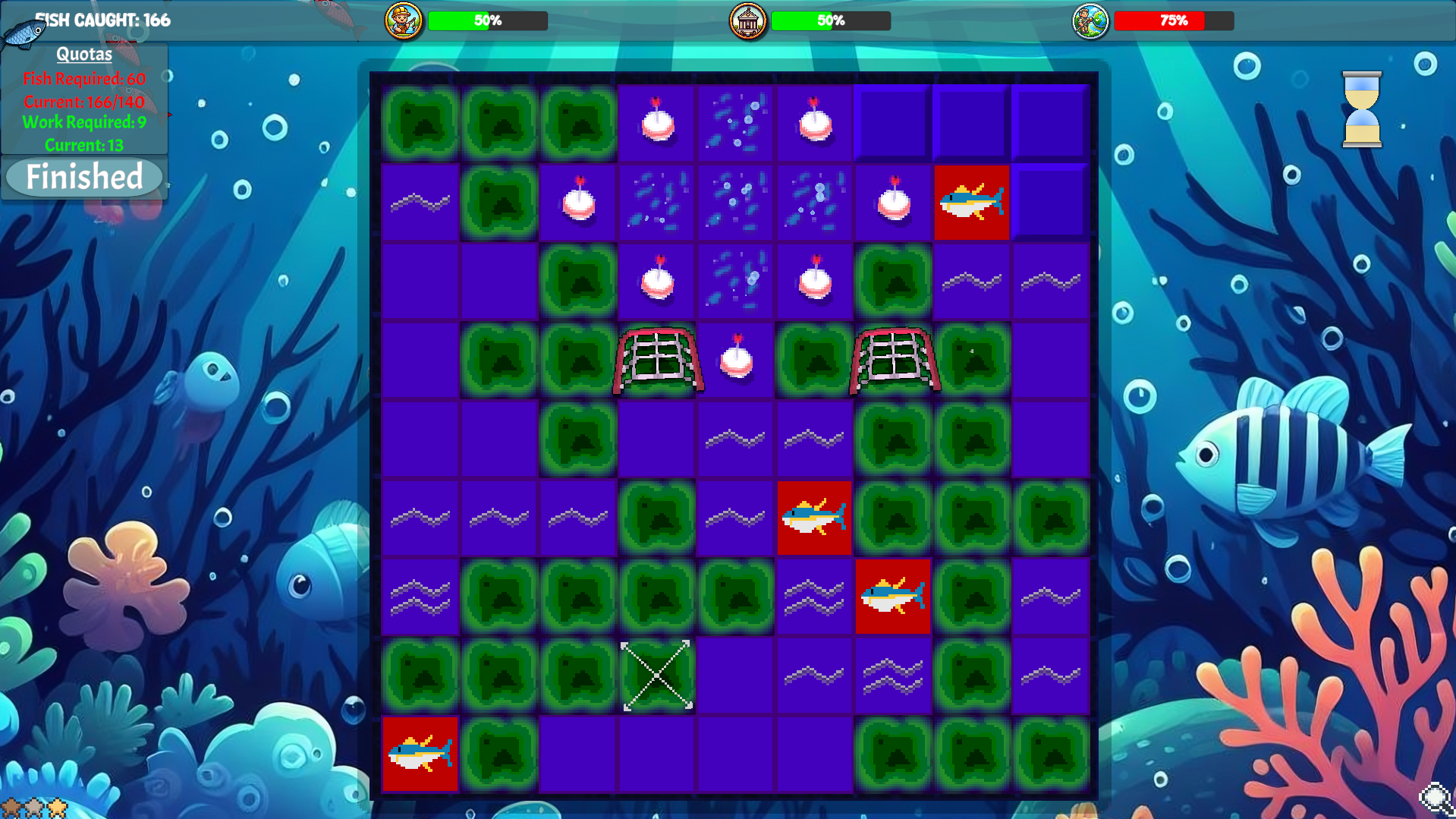
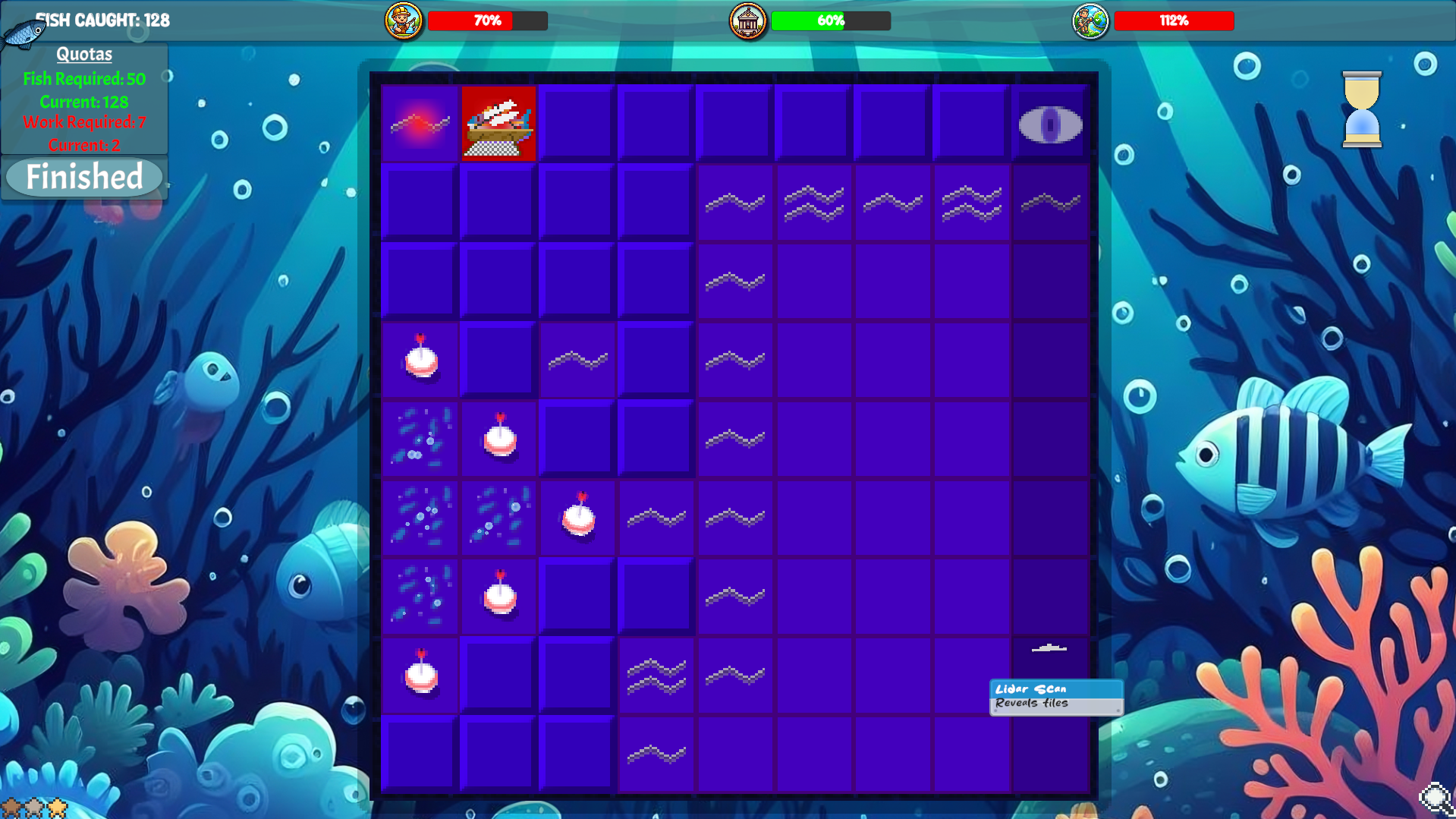
About
"The Last Catch" is an innovative puzzle game that merges the strategic depth of Minesweeper with a compelling narrative about sustainable fishing. Players assume the role of a fisher navigating treacherous waters filled with environmental hazards. Utilizing a Lidar system, players must identify and avoid endangered species while maximizing their catch of sustainable fish.
Players will work out a grid-based ocean floor, using their skills and equipment to detect and mark endangered zones while uncovering safe fishing areas. Each successful mission helps players pay off their debts and manage relationships with various factions, all while promoting sustainable fishing practices.
Work with factions to introduce new legislation that will offer up limits and rewards

Development
My Role
During the initial development phase, I focused on experimenting with game mechanics and learning potential. Which lead me to my first prototype it felt too similar to existing fishing games and was about running out of fish
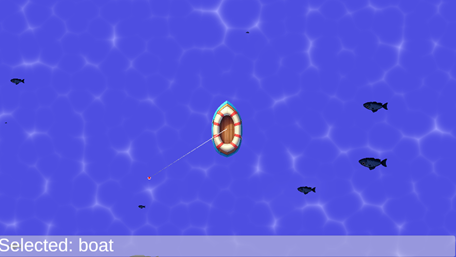
So I pivoted towards a unique approach inspired by Minesweeper, but with the focus on avoiding catching endangered fish, I learned that the term for incorrectly catching the fish your aiming for was called bycatching and wanted to teach that. I was thinking how I could develop and expand on minesweeper
By incorporating "world events" like oil spills, algae blooms and storms, I created a dynamic environment that balanced entertainment with an educational message about sustainable fishing practices.
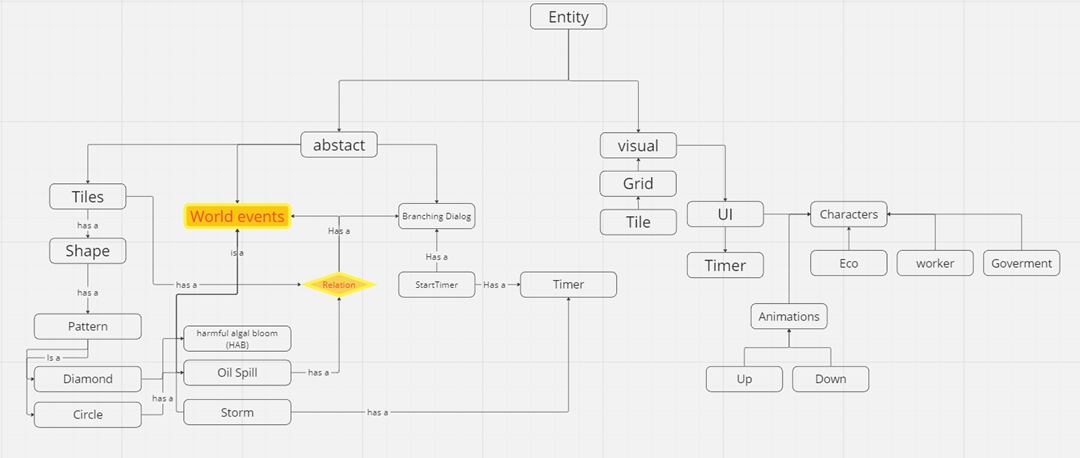
Click to view
Feedback and Iteration
Feedback played a crucial role in the development process. Regular testing with peers and external audiences helped me refine the game's usability, balance, and coherence.

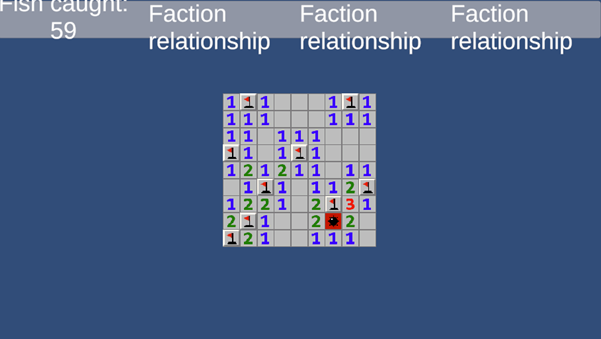
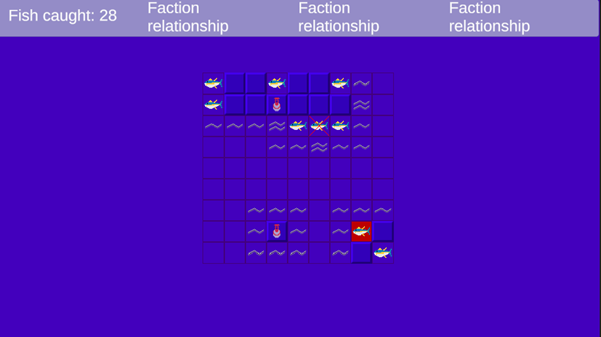

Key changes included adjusting the difficulty curve, enhancing the user interface, and adding visual effects for better player feedback.
Art and Visuals
To enhance engagement, I explored various art styles and incorporated AI-generated assets, which were later refined to match the game's theme. This approach allowed for visually appealing elements without compromising the project timeline.
However for all of the sprites on the board I created them as I felt that over using AI would distract and be unclear of what the tiles should be
For the PowerUps, my feedback was to make it clearer what they would do without using any words. I thought of using an eye icon to give a hint of what it might do, revealing the hidden tiles.
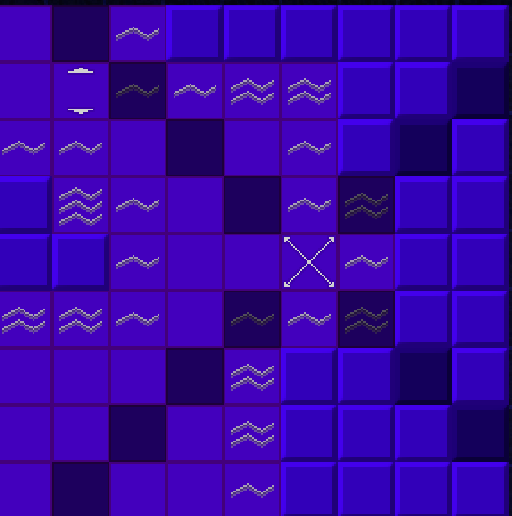
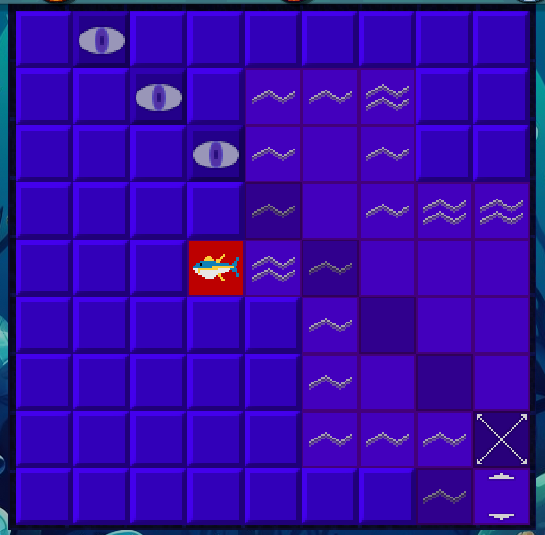
Polishing and Refinement
As development progressed, I focused on polishing and refining features to make the gameplay more interactive and accessible. Feedback from playtests informed improvements to the game timer, tutorial design, and difficulty progression, ensuring a smooth and engaging learning experience.

Future Development
If I had more time to develop I would of introduced plastic as a slow build up, which would require faction support to remove.
I also had a fun Power-up TNT however I felt it was a little silly and decided not to include it in my submission, if I had I would have fished in a large area similar to how the oil spills are generated and would provide double fish at the cost of the environment faction.
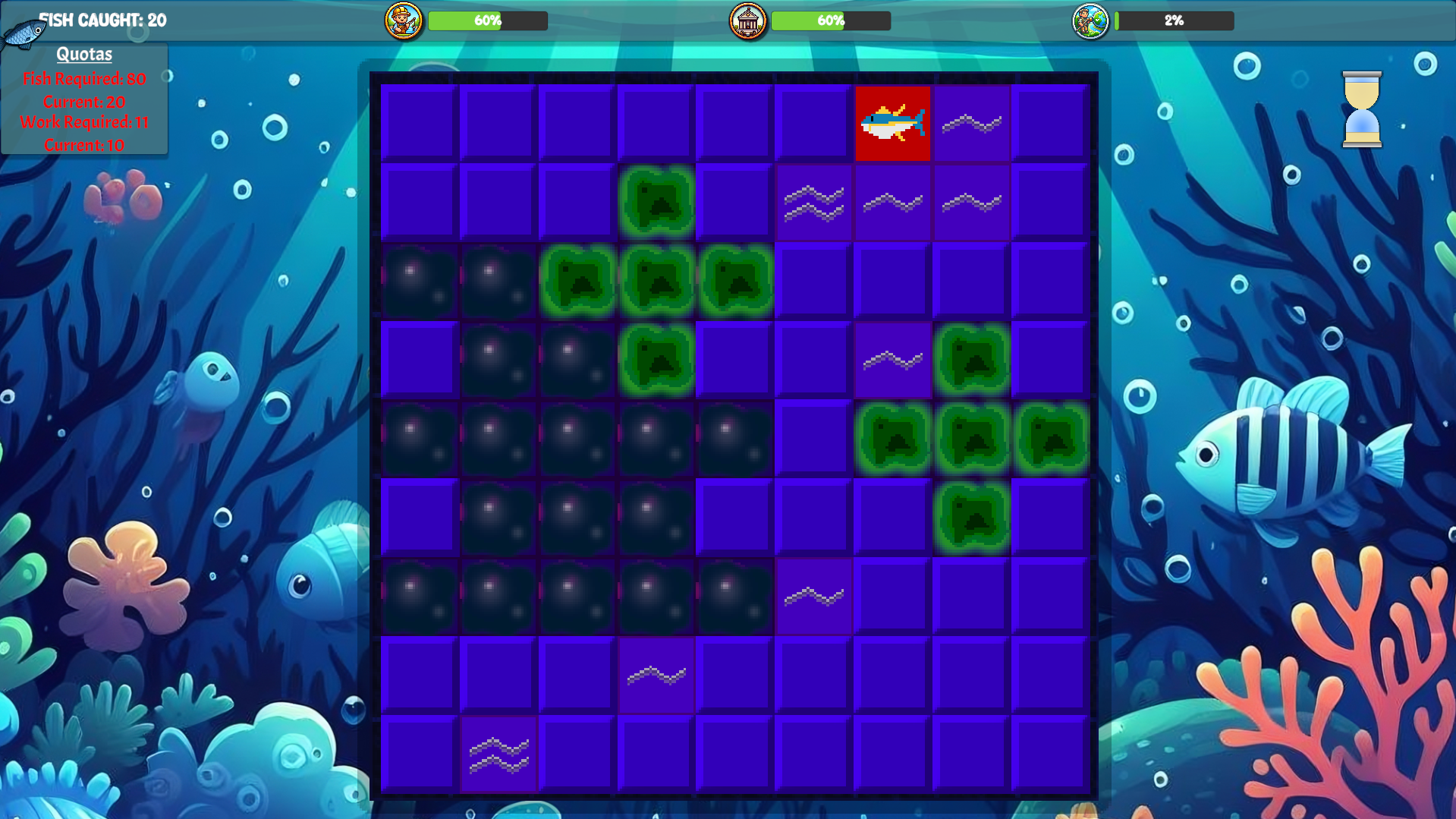
I possibly got carried away with making it feel smooth. I focused a lot on the little things, such as the fish getting reeled to the top. In hindsight, the time would have been better spent refining the ecosystem damage from the overfishing system. I was going to make events such as oil spills and algae blooms start off small, but as the ecosystem damage increased, so would the size of the disasters, making it harder to win.
I managed to find some of the images they were out of scale and I do not have access to the orignal
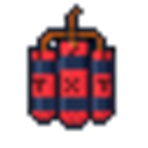
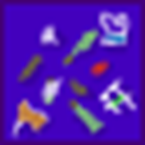
During the development of the game, I discovered that while many people have heard of Minesweeper, few have actually played it. As a result, I had to create some guides to help players understand the mechanics. Here are some examples of the tutorials:
